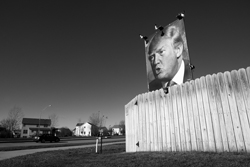
by Michael Reilly, AACRAO Executive Director
A few weeks ago I had the pleasure of attending a White House Summit on Access and Inclusion. The Summit corresponded with the release of a report, “Advancing Diversity and Inclusion in Higher Education,” identifying gaps in educational opportunity and highlighting promising efforts to create inclusive campuses. (Read the report here.) The summit included researchers, university administrators and civil rights leaders, as well as students from colleges and universities around the country.
As participants gathered for the summit there was a noticeably somber air in the room. Theodore Shaw, the director of the University of North Carolina at Chapel Hill’s Center for Civil Rights and moderator of the opening panel, described it as the “elephant in the room” referencing the recent election of Donald Trump as president. A number of presenters wondered aloud whether this might be their last invitation to the White house.
There is no question many higher education leaders are anxious about what lies ahead after an election that was as divisive as any in our history. Were the president-elect to follow through on any number of proposals raised during the campaign that anxiety would be more than justified, particularly when it comes higher education’s efforts to improve diversity and inclusion. The anti-immigrant rhetoric was harmful enough, but now that rhetoric could be turned into policies with far more serious impacts.
More than 700,000 young people who came to the U.S. as children of undocumented immigrants are receiving temporary protections under the Deferred Action for Childhood Arrivals or DACA program. Many of these young people are studying at our colleges and universities. Hundreds of college and university presidents and administrators have called for continuation and expansion of DACA. Students who registered under DACA in good faith now are fearful of what the new administration will do with the information they provided.
There are also significant concerns about how the anti-immigrant, anti-Muslim rhetoric will impact international student enrollments on our campuses. Moody’s Investor Service recently called international student enrollment an “uncertain revenue stream” given the president elect’s campaign proposals that included the possible elimination of the J-1 visa exchange program and “extreme vetting” of visa applicants from countries “that have a history of exporting terrorism”. Australian officials have announced that they expect to see an increase in international student enrollment as a result of the U.S. election and the Brexit vote in the UK.
While there are worrisome possibilities emerging from the new administration, one takeaway from the Diversity and Inclusion Summit was that creating diverse and inclusive campus communities rests more with us than anything that might come out of Washington. There is good work underway at many of our colleges and universities but also tremendous challenges as many of the student leaders at the Summit articulated.
The most striking image I took from the Summit was of Theodore Shaw, who has committed his life and career to confronting injustice, sitting at one end of the head table while Payton Head, former president of the University of Missouri’s Student’s Association, whose social media post after experiencing a racial slur sparked a national conversation on racism and inclusion, sat at the other end. It was a fitting reminder that there are strong young leaders ready to take the torch and continue the work of building diverse and inclusive campus communities.